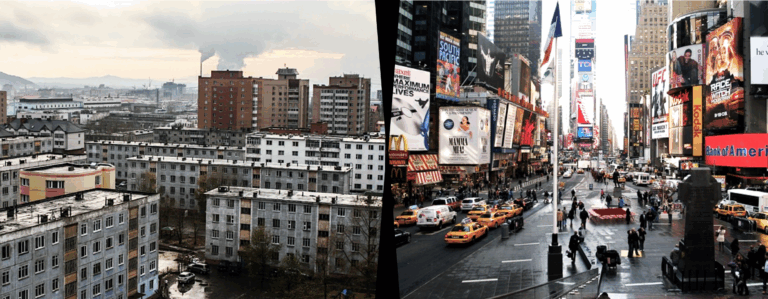The Parliamentary Budget Officer (PBO) is one of Ottawa’s newer institutions, created in 2006 by the Conservative government of Stephen Harper to improve the quality and impartiality of federal fiscal forecasting and analysis. According to the PBO’s website, its mandate “is to provide independent and non-partisan analysis to Parliament on the budget, the estimates and other documents, as well as matters of particular significance relating to the nation’s finances or economy.” Its work can also include costing analyses of any federal party’s election promises. If there are references among the thousands of words of PBO website verbiage to critiquing the fiscal policy decisions of provincial governments during a time of political controversy, they are deeply buried.

So at least a few eyebrows were raised when current PBO Yves Giroux, an economist appointed by the Trudeau government last year, waded into the at-times bitter debate over the Jason Kenney government’s first budget, pronouncing its approach of cutting both spending and taxes “unsustainable”. Following a presentation to students at the University of Calgary’s School of Public Policy two weeks ago, Giroux was asked by a journalist about the new premier’s fiscal policy and declared, “If you want to become sustainable, return to a sustainable track, you cannot cut both [taxes and spending] at the same time.”
Giroux reasoned that long-term projections of an aging Alberta population combined with expectations of increasing demand for health care will put upward pressure on the cost of government. This means that taxes must also rise or that offsetting spending reductions must be made elsewhere to limit growth in spending and keep the debt under control.
History, however, suggests Giroux is flat wrong. Past reductions in the province’s spending in the mid-1990s and of taxes in the late 1990s and early 2000s not only proved sustainable, but indeed became the reason why, despite recent reverses, Alberta’s debt-to-GDP ratio is still the lowest and its per capita income still the highest in Canada.
The results of the Klein era’s spending and tax cuts were spectacular. The economy became much more productive as the private sector commanded an increasing share of resources. A leaner government combined with increasing government revenues – even as tax rates fell – delivered not only balanced budgets but surpluses, enabling the province to wipe out its debt.
Alberta’s earlier experience with fiscal austerity began in 1993, when Ralph Klein was elected Premier on a mandate to get the province’s finances under control after continuous spending increases throughout the 1980s and into the early 1990s, plus the lingering effects of the oil price collapse of 1986, put the province into a deep fiscal hole. In 1985-86, Alberta had net assets equal to 17.1 percent of GDP, a legacy of its robust revenues and many years of balanced budgets or even surpluses. By 1992-93, all of this had disappeared and Alberta instead had racked up a net debt equivalent to 9.2 percent of its GDP. The fiscal mess was one of the main reasons behind the resignation of Premier Donald Getty, opening the way for the unlikely election of Klein as his replacement.

Klein had campaigned on cutting provincial government spending by 20 percent and upon his upset election win began delivering immediately. The first Klein budget reduced spending in 14 government departments and trimmed provincial government employment by more than 2,500 jobs (a number that would grow significantly over several years of attrition). Although program spending fell by over $750 million (a significant sum at a time when provincial spending was “only” around $14 billion annually), Treasurer Jim Dinning declared that “expenditure cuts will have to go deeper” and that the work “has just begun.” By 1996-97, Alberta’s nominal program spending had been slashed by 24 percent from the 1992-93 level. Deficits had turned to surpluses, and net provincial debt had declined to 3.7 percent of GDP.
With the spending problem taken care of, the Alberta government began cutting taxes as well, beginning with a modest 3.3 percent income tax cut in 1998. The next year the province announced it would move to a single-rate personal income tax (which was implemented in 2001) and also reduced the financial institutions capital tax rate. In addition, the Alberta government appointed a tax review committee to improve competitiveness. Its work resulted in the government reducing the provincial corporate tax rate from 15.5 percent in 2000 to 10 percent in 2006 (where the rate would stay until the NDP raised it after their 2015 election).
The results of the Klein era’s spending and tax cuts were spectacular. The economy became much more productive as the private sector, not the government, commanded an increasing share of resources. A leaner government combined with increasing government revenues – even as tax rates fell – delivered not only balanced budgets but a series of surpluses, enabling the province to wipe out its debt. By 2006 Alberta would have $33 billion in net financial assets.
Individual Albertans also benefited greatly. From 1993 to 2006, real disposable income per capita grew by 43.5 percent – just over double the rate of growth in the rest of Canada. So much for the alleged unsustainability of fiscal austerity. Alberta’s stellar results in the Klein era demonstrate that, if anything, the Kenney government’s current and proposed tax and spending cuts are not nearly deep enough.
After 15 or so years of virtually uncontrolled spending increases and almost uninterrupted annual deficits under previous Progressive Conservative and NDP governments, the province has once again accumulated large debts, reaching $36.6 billion or 10.2 percent of GDP this fiscal year. Despite these worrying numbers, the new UCP government’s current fiscal plan cuts spending by a mere 2 percent over four years, compared to a 24 percent reduction in Klein’s first four years.

The current government’s proposed tax cuts are also smaller and narrower than those enacted two decades ago. The corporate tax rate has been shaved from 12 percent (the level to which it was raised by the previous NDP government) to 11 percent, and is scheduled to fall to 8 percent by 2022. But this will be offset somewhat by an effective personal income tax hike in the form of bracket creep, because the province’s income tax bracket thresholds are not rising to match price inflation.
The benefits of the proposed corporate tax cuts are likely to be significant, however. A study in 2016 by Alberta fiscal economists Ergete Ferede and Bev Dahlby estimated that the cost to society of raising every additional $1 in provincial corporate tax revenues was $2.91. Another study the next year by Kenneth McKenzie and Ferede estimated that every cut of $1 in corporate taxes would raise workers’ incomes by $1.52 (a portion of which itself would be taxed and become government revenue). Surely there is nothing economically unsustainable about such salutary effects, nor anything praiseworthy about bogging down the economy with inefficient tax increases.

Giroux, does, however, have a point about the unsustainability of cutting taxes and spending even as demand for government-provided health care rises. In a previous report, he opined that permanent tax increases or spending reductions would be required to stabilize Alberta’s net debt to GDP ratio. There as well, however, he seemed entirely concerned with the effects of tax rates and oblivious to the possibility that economic growth – including growth triggered by favourable government fiscal policy decisions – might have a positive impact on tax revenues. He also sidestepped the issue of reforming the health care system to make it more efficient – and financially sustainable.
By instead of taking aim only at fiscal austerity (to the extent that the current government’s plan can be considered austere), Giroux has seriously misfired. What is really unsustainable is a government monopoly health-care system that operates in the absence of market-based prices, costs to consumers, the efficiency effects of the profit motive, private investment, and a normal labour market – all the things from which most private industries benefit. Whatever fiscal policies are implemented, the Canadian health care model is progressing towards collapse – and Alberta’s is no exception. There is nothing unsustainable, meanwhile, about cutting taxes and government spending and enjoying the resulting benefits.
Matthew Lau is an economics writer based in Toronto.







